Arcadian Atlas Review
Seven years since its initial Kickstarter campaign, the road to the full release of Arcadian Atlas has been a long one. Developer Twin Otter Studios consists of a brother-sister duo from Texas that set out to make the game of their dreams and announced their partnership with publisher Serenity Forge in August 2021 to put their tactical RPG in front of more eyes.
After playing the full final release, I think Arcadian Atlas is a mostly okay RPG; it’s mediocre, yet competent. There are admirable aspects about it on a conceptual level. Ultimately, it falls short when it comes to how the game executes them - which results in something that feels relatively unfulfilling. Nevertheless, I think Arcadian Atlas is a decent “first game” for these brand-new independent developers.
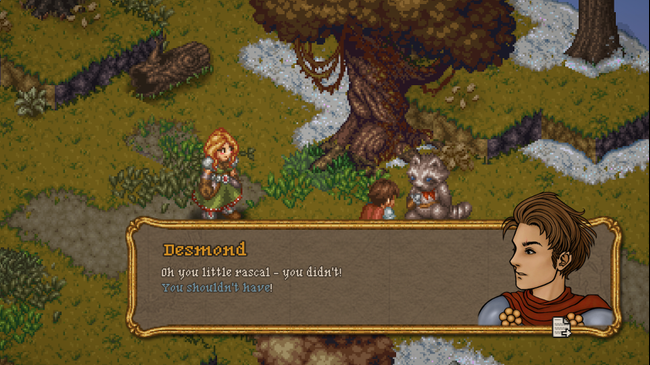
Arcadian Atlas revolves around two protagonists - Vashti Dahlman and Desmond Rhines. They are a couple that finds themselves on opposite sides of a royal conflict. Queen Venezia is suspected of poisoning the late King Tirgan to usurp him. Her two stepdaughters from Tirgan, Lucretia and Annalise, are the central pillars that drive Arcadian Atlas’s plot.
Lucretia storms out of the royal capital to form a rebellion against Venezia, while Annalise is exiled elsewhere where she gets caught up in an enigmatic conspiracy. Desmond continues to work under Venezia’s army and Vashti ends up in Lucretia’s camp.
It’s a classic tragic tale of love with differing ideologies at first. There’s nothing especially compelling about it, even when I discovered that most of the background information that helps shape the cast’s motivations are tucked away behind their entry in the compendium. Where the story eventually ends up feels bog-standard as it is all working toward a typical end-of-the-world scenario in the last third of Arcadian Atlas.
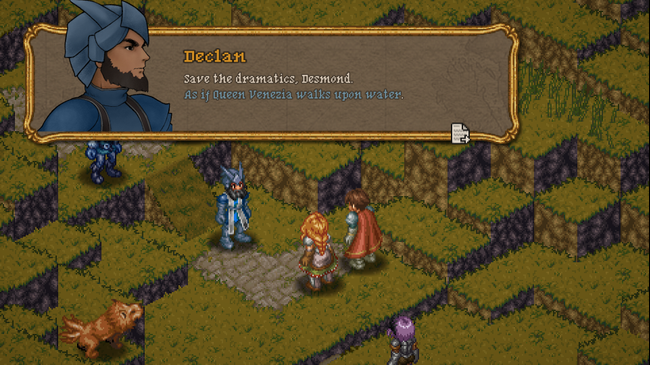
There are attempts to try and convey the horrors of war along the way, though it’s hard to take any of it seriously when my squad just massacres people from town-to-town without a second thought.
The thing I did like about its story presentation is the attention to detail of facial expressions and body language in the pixel artstyle. When characters’ eyes would narrow or droop down in a conniving manner, it was easy to tell where the direction of a conversation would go without a single word being uttered yet.
Another defining characteristic that took me a bit to get used to is its Art Nouveau approach to facial portraits. It presents a hand-sculpted look with thick outlines to accompany its exaggerated curvatures on the shapes of faces and hairstyles; this gives Arcadian Atlas a strong visual identity in this regard. While this style can be a hit-or-miss for some human portraits, I rather enjoyed it overall for the various animal portraits it was applied to - including Poncho, a playable raccoon with a crossbow.
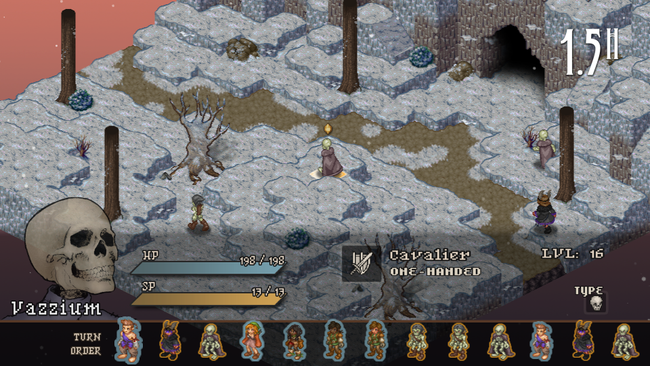
As for its gameplay, Arcadian Atlas is an isometric strategy RPG that is serviceable, though unrefined. It is a little reminiscent of Tactics Ogre, but Arcadian Atlas is understandably operating on a smaller scale - which leaves it more on the simplistic side.
Players begin battles by deploying their troops in an allocated space of tiles; usually up to five units, though there are a few times that number will vary. Most of the time players will have complete freedom over who they deploy as well. There are very few instances when certain specific characters are forced to be on a mission.
Leveling is even more straightforward than most RPGs. There are no experience meters or bars to deal with here. Instead, if a character participates in a battle, they will automatically earn a single level after it. Vital story characters, like Vashti and Desmond, will earn a level regardless if they participated or not.
The narrative bounces between Vashti and Desmond’s perspective at times. Outside of a few unique characters that are with them because of the story, the rest of your troops that aren’t narratively relevant remain with you no matter what.
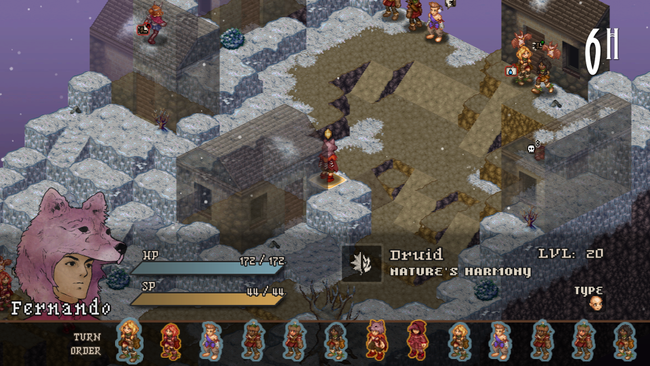
There are four base starter classes in Arcadian Atlas - Cavalier, Warmancer, Ranger, and Apothecary. Cavaliers and Rangers serve the melee and ranged DPS respectively; Warmancers dabble with elemental spells; and Apothecaries are the support class, of course. As units level up, they’ll earn skill points to spend freely on their skill tree. These guide what kind of role they’ll serve in combat.
Apothecaries can be built to specialize in providing healing to your allies in the Field Medic section of their skill tree. Meanwhile, another Apothecary can be specced into the Corrosive Concoctions part of the skill tree that can deal damage and debuffs from a distance. Players can even mix-and-match these roles if they want a jack-of-all-trades Apothecary, though some abilities are inherently locked behind having to have a certain weapon or shield to use them.
Each of the four base classes can be promoted to one of two higher advanced classes available to them. The Inquisitor and Ronin classes are available to Cavaliers, each with their own skill tree, specialties, and roles.

The game presents a wide variety of options for players in how they want to build their parties. There is a lot of potential in creating intriguing synergies and Arcadian Atlas bypasses the pressure of grinding levels through recruiting new already leveled-up units at the Tavern to slot skill points into. Their levels become higher and higher the further into the game you recruit new units, so there’s a point you can just promote them to advanced classes right away too.
All of this does sound great on paper. Unfortunately, Arcadian Atlas faces some balancing issues, as amusing as they are. I pretty much steamrolled the entire game with a party of one Apothecary (later promoted to a Monk) and the rest were Rangers (and later Hunters) with crossbows.
Bumping up the difficulty couldn’t stop how much of a slaughterfest this team composition was. It was time efficient too, since I never had to move more than a few tiles from my starting locations because the range of their skills were so vast. All I had to do was keep their gear up-to-date and slot all of them with accessories that further raised their attack.
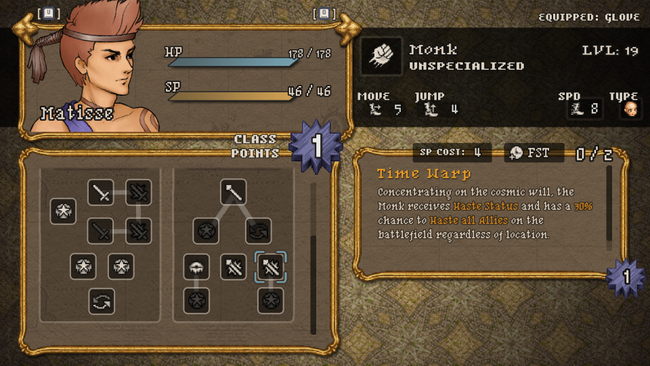
While I enjoyed that the game allowed me to exploit it in such a manner, it didn’t provide a challenge anymore. I wouldn’t mind it as much if there were sections of the game that forced me to play, think, or approach them differently. I accidentally stumbled across it within the first two hours of my playthrough. It never stopped working. Other alternative team compositions led to slower battles, so there was really no incentive to switch it up other than arbitrarily dragging battles out.
This factors into how Arcadian Atlas tries to integrate terrain into its gameplay design as each unit has a jump stat. Like in other tactical RPGs in the genre, this stat determines if a unit can traverse to a higher-elevated tile from a lower one and the higher the jump stat is, the more a unit can traverse at larger discrepancies in-between differently elevated adjacent tiles.
A good chunk of maps try to vary up its battle scenarios through the environment’s verticality. Rangers and Hunters can not only exploit this with their enhancements to achieve high jump stats, but a higher elevation improves their line of sight along with being more difficult to reach. Even if enemies are on higher terrain, ranged weapons can still fire up to them with almost no penalties; there were even times when they could fire opponents around a corner in an enclosed area. There were certainly more oddities that I noticed in a similar vein that, once again, made for a drastically imbalanced experience.
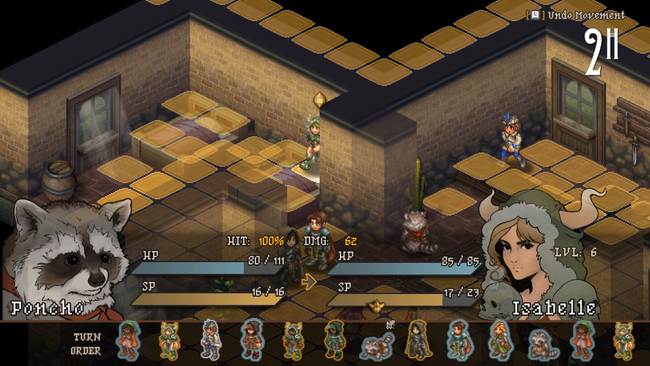
Other certain parts of the battle interface reinforced this notion of being unrefined. In the pre-battle deployment phase, you don’t see where enemy troops will be deployed at all. It’s difficult to formulate a cohesive strategy in a tactical RPG if you don’t know what to account for. Normally this’d be more of a problem if I didn’t accidentally stumble upon my dumb team composition early on. There is an optional “Scout Report” upgrade that players can purchase from a currency earned completing side quests that will inform them the types of troops they’ll encounter in a side mission, but that’s about it.
Being unable to swing the camera around in combat annoyed me as well. Certainly there are hurdles that prevented its implementation from an art and programming perspective I’m sure, so I wish Twin Otter Studios better handled the fixed isometric perspective. It can be a struggle to see exactly which unit tiles are on when there are environmental objects in the way and/or they’re on different varying elevations. Simply put, there’s a lot of visual clutter in some battles that make the locked camera a hassle to deal with.
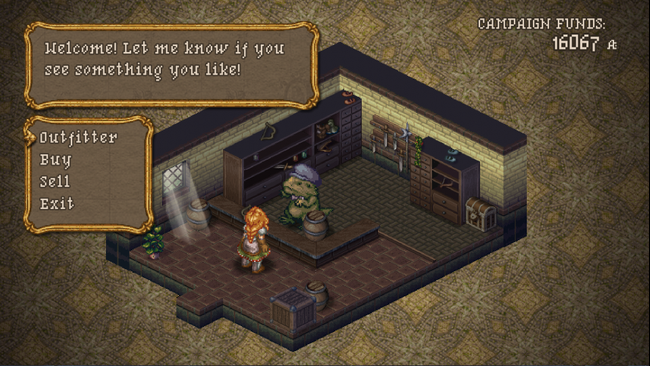
Some other usability issues compile onto these frustrations. Ranged attacks don’t display a line-of-sight arc, so if you move a Ranger to a tile that’s just one-off from establishing line-of-sight onto an enemy’s tile, you’ll have to undo the entire move back to the initial tile position and move them again to the correctly spaced tile. Speaking of that, yes that means units always anchor off of their initial tile positions from the beginning of the turn when trying to move them to different spots. They can’t simply correct their positions directly from one tile to the next; they must undo their move back to the first spot, then move to the new intended spot.
Aside from several gameplay design decisions that irked me and a mediocre story didn’t do anything for me, my time with Arcadian Atlas was pleasant and admittedly insignificant. I don’t have any strong feelings for what I played. It took me roughly 12 hours to finish with all the sidequests done. The music had a nice jazz-infused flavor that made it more memorable than I expected. If you’re looking for a new strategy RPG and are willing to give a new independent studio’s first shot a genuine chance, this one is alright.